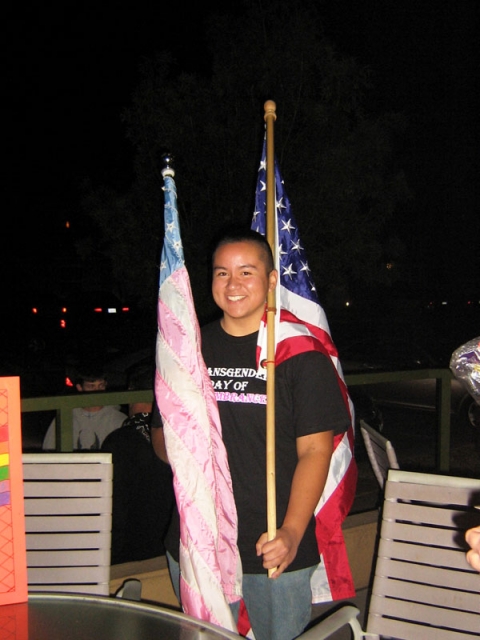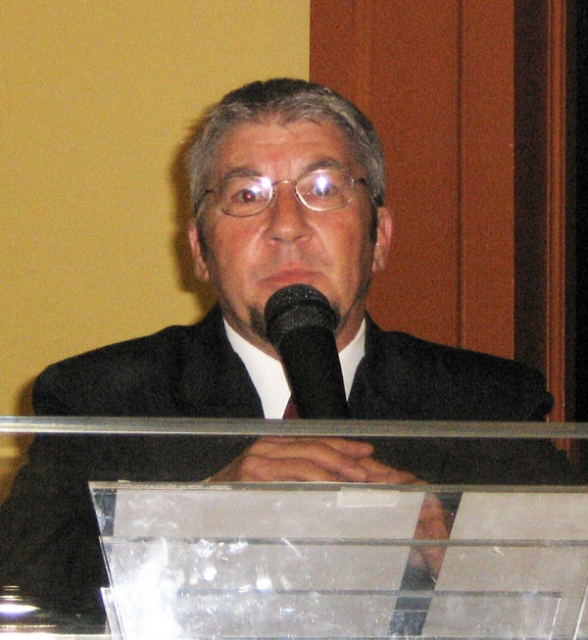From the Open-Publishing Calendar
From the Open-Publishing Newswire
Indybay Feature
San Diego Hosts Transgender Day of Remembrance
San Diego hosted its seventh Transgender Day of Remembrance November 20. The event, begun in San Francisco in 1998, honors the people murdered throughout the year because of their actual or perceived Transgender status. A wide range of Queer community activists participated in the march and program. (Program duration: 27 min.)
Listen now:
S.D. Hosts Transgender Day of Remembrance
Memorializes People Killed Because of Anti-Trans Hatred
by MARK GABRISH CONLAN
Copyright © 2008 by Mark Gabrish Conlan for Zenger’s Newsmagazine • All rights reserved
“This is not a No on 8 march,” Transgender activist Brenda Watson said into a bullhorn outside the San Diego LGBT Center as she and fellow Transgender activist Onyx prepared to lead the seventh annual Transgender Day of Remembrance march down University Avenue in Hillcrest on the night of November 20. Watson instructed the 100 marchers not to chant during the event, but to keep the atmosphere properly somber and serious. Indeed, as the march moved down University Avenue, despite the signs some participants were carried, some passers-by seemed confused as to what the issue behind it was — but when it was explained to them, they were invariably sympathetic and supportive.
The Transgender Day of Remembrance is an international event held every November in memory of Rita Hester, who was killed in San Francisco in November 1998. Hester’s murder sparked a local march a year later and a “Remembering Our Dead” Web project to highlight all the hate-related murders targeting Transgender people. The event is a case study in how the Internet is facilitating nationwide and even worldwide mobilizations. A Web site, http://www.transgenderdor.org, posts the list of the victims to be honored in that year’s march and such basic information as where the crimes took place, how old the victims were and whether their killers have been identified, arrested or convicted. Then people in each city hosting the Day of Remembrance prepare scripts to be read by Transgender people and allies at a ceremony following the march.
This year’s ceremony was held at the Center following the march and was MC’d by Connor Maddocks, Center staff member for Transgender issues and founding president of the San Diego chapter of FTMI (Female-to-Male International). “One is too many, and 30 is unbelievable,” Maddocks said. “I looked through the list, and they ranged in age from 15 to 42. Most of them were under the age of 30. These are lives that are gone forever, of promises, of families with a hole in them, of friends who will never see their friends again, of potential for greatness lost from our world. And there’s no good reason for it. It’s from hate, it’s from fear, it’s from ignorance.”
Maddocks praised the Lesbian, Gay and Bisexual communities for supporting the Transgender community, and noted that Transgender people have returned the favor by joining in the protests against the passage of Proposition 8. Marriage rights for Transgender people are even more muddled than those for same-sex couples. California and New York both allow post-operative Transsexuals to marry in their new gender (an early version of Proposition 8 would have reversed that, but it wasn’t the one that made it to the ballot), but most states don’t allow Transgender people to marry at all.
“I recently had somebody ask me if I could have changed my world and been born biologically male, and not have had to go through what I’ve gone through, would I have done that,” Maddocks said. “I think my first reaction was, ‘Well, of course. That would have been easy. That would have been nice.’ But when I thought about it, absolutely not. I have had a life that’s been so enriched by what I’ve gone through, what I’ve learned about human nature, but more about what I find in our community, how we come together, how we help, how we support each other.”
The most famous of the 30 listed victims was Lawrence King, a 15-year-old high-school student in Oxnard, California who was shot by a 14-year-old classmate on February 12. Although he didn’t specifically identify as Transgender, King said he was Gay and frequently wore women’s clothing to school — and his alleged killer said that’s what put him off and led him to shoot King to death.
Another victim, Aimée Wilcoxson, formerly lived in San Diego, went to the Brass Rail and attended Stepping Stone. She moved to Aurora, Colorado and was found dead in her bed on November 3. She was 34 years old, and authorities have not yet announced a cause of death.
A number of the victims were killed by “straight” men who, while having sex with them, discovered male organs and realized their partners weren’t biologically female. One victim, Felicia Melton-Smyth from Wisconsin, was on vacation in Puerto Vallarta, Mexico when she was killed by a man who later told police he’d done it because she’d refused to pay him for sex. Many of these victims were stripped by their killers and left in the street. Others were Gay or “questioning” people who were still exploring their sexual orientation and gender identity.
Duanna Johnson of Memphis, Tennessee was killed on November 9, nine months after she had been beaten by city police. The February assault against her had been filmed by a surveillance camera, and one of the police officers who beat her had been indicted just a few days before her murder. Though the script for the Day of Remembrance carefully avoided making this allegation, it hinted that she was murdered by police in order to make sure she could not testify in court against her original assailant. The script said that her murder was being investigated by the FBI.
Another grim tale was that of 18-year-old Adolphus Simmons of Charleston, South Carolina, who was dressed as a woman when he was killed on January 21 while taking out his garbage. He was shot on the steps of his apartment building, and police initially said that there was nothing to suggest Simmons’ murder had been a hate crime. Later the police said that the reason they’d said that was because South Carolina has no hate crimes statute. Police lieutenant James Walley admitted that no motive for Simmons’ death had been identified, and would not rule out that he’d been targeted because of his perceived sexual orientation or gender identity.
One of the most heartbreaking stories was that of Simmie Williams, Jr., described as “a sensitive 17-year-old” from Fort Lauderdale, Florida. He had just signed up for the Job Corps and was planning to attend culinary school and pursue a career as a chef. At the time of his killing on February 28 he did not identify as Transgender, but was living an openly Gay life and living with his mother, who accepted his sexual orientation. He was killed in an area known to be frequented by Transgender sex workers and was wearing women’s clothing when he was shot.
Perhaps the most frightening story was that of Ali, a Transgender Iraqi who, along with two others, was kidnapped and put to death by religious fundamentalists in January 2008. Before they killed her, they kept her in captivity for several days and filmed her first as a woman, then as a man. In their video, posted on http://uk.youtube.com/watch?v=Z2tDVtjQNfQ, they first show her in a veil, then from the back with a red print dress on, then from the front with several days’ growth of beard. Then they take clippers to her hair and carefully shave her head while dancing, singing, and chanting what are apparently prayers to Allah.
In the remembrance ceremony, a candle was lit as each victim’s name was read and the final candle was lit for all the Trans-related hate murders that were not reported to authorities and whose victims’ names remain unknown. “As we go forward, let us never forget,” Maddocks said at the end of the ceremony. “Let us pray that there are not 30 names a year from now. Protect each other, show some love out there. Remember to stand up for each other always.”
Memorializes People Killed Because of Anti-Trans Hatred
by MARK GABRISH CONLAN
Copyright © 2008 by Mark Gabrish Conlan for Zenger’s Newsmagazine • All rights reserved
“This is not a No on 8 march,” Transgender activist Brenda Watson said into a bullhorn outside the San Diego LGBT Center as she and fellow Transgender activist Onyx prepared to lead the seventh annual Transgender Day of Remembrance march down University Avenue in Hillcrest on the night of November 20. Watson instructed the 100 marchers not to chant during the event, but to keep the atmosphere properly somber and serious. Indeed, as the march moved down University Avenue, despite the signs some participants were carried, some passers-by seemed confused as to what the issue behind it was — but when it was explained to them, they were invariably sympathetic and supportive.
The Transgender Day of Remembrance is an international event held every November in memory of Rita Hester, who was killed in San Francisco in November 1998. Hester’s murder sparked a local march a year later and a “Remembering Our Dead” Web project to highlight all the hate-related murders targeting Transgender people. The event is a case study in how the Internet is facilitating nationwide and even worldwide mobilizations. A Web site, http://www.transgenderdor.org, posts the list of the victims to be honored in that year’s march and such basic information as where the crimes took place, how old the victims were and whether their killers have been identified, arrested or convicted. Then people in each city hosting the Day of Remembrance prepare scripts to be read by Transgender people and allies at a ceremony following the march.
This year’s ceremony was held at the Center following the march and was MC’d by Connor Maddocks, Center staff member for Transgender issues and founding president of the San Diego chapter of FTMI (Female-to-Male International). “One is too many, and 30 is unbelievable,” Maddocks said. “I looked through the list, and they ranged in age from 15 to 42. Most of them were under the age of 30. These are lives that are gone forever, of promises, of families with a hole in them, of friends who will never see their friends again, of potential for greatness lost from our world. And there’s no good reason for it. It’s from hate, it’s from fear, it’s from ignorance.”
Maddocks praised the Lesbian, Gay and Bisexual communities for supporting the Transgender community, and noted that Transgender people have returned the favor by joining in the protests against the passage of Proposition 8. Marriage rights for Transgender people are even more muddled than those for same-sex couples. California and New York both allow post-operative Transsexuals to marry in their new gender (an early version of Proposition 8 would have reversed that, but it wasn’t the one that made it to the ballot), but most states don’t allow Transgender people to marry at all.
“I recently had somebody ask me if I could have changed my world and been born biologically male, and not have had to go through what I’ve gone through, would I have done that,” Maddocks said. “I think my first reaction was, ‘Well, of course. That would have been easy. That would have been nice.’ But when I thought about it, absolutely not. I have had a life that’s been so enriched by what I’ve gone through, what I’ve learned about human nature, but more about what I find in our community, how we come together, how we help, how we support each other.”
The most famous of the 30 listed victims was Lawrence King, a 15-year-old high-school student in Oxnard, California who was shot by a 14-year-old classmate on February 12. Although he didn’t specifically identify as Transgender, King said he was Gay and frequently wore women’s clothing to school — and his alleged killer said that’s what put him off and led him to shoot King to death.
Another victim, Aimée Wilcoxson, formerly lived in San Diego, went to the Brass Rail and attended Stepping Stone. She moved to Aurora, Colorado and was found dead in her bed on November 3. She was 34 years old, and authorities have not yet announced a cause of death.
A number of the victims were killed by “straight” men who, while having sex with them, discovered male organs and realized their partners weren’t biologically female. One victim, Felicia Melton-Smyth from Wisconsin, was on vacation in Puerto Vallarta, Mexico when she was killed by a man who later told police he’d done it because she’d refused to pay him for sex. Many of these victims were stripped by their killers and left in the street. Others were Gay or “questioning” people who were still exploring their sexual orientation and gender identity.
Duanna Johnson of Memphis, Tennessee was killed on November 9, nine months after she had been beaten by city police. The February assault against her had been filmed by a surveillance camera, and one of the police officers who beat her had been indicted just a few days before her murder. Though the script for the Day of Remembrance carefully avoided making this allegation, it hinted that she was murdered by police in order to make sure she could not testify in court against her original assailant. The script said that her murder was being investigated by the FBI.
Another grim tale was that of 18-year-old Adolphus Simmons of Charleston, South Carolina, who was dressed as a woman when he was killed on January 21 while taking out his garbage. He was shot on the steps of his apartment building, and police initially said that there was nothing to suggest Simmons’ murder had been a hate crime. Later the police said that the reason they’d said that was because South Carolina has no hate crimes statute. Police lieutenant James Walley admitted that no motive for Simmons’ death had been identified, and would not rule out that he’d been targeted because of his perceived sexual orientation or gender identity.
One of the most heartbreaking stories was that of Simmie Williams, Jr., described as “a sensitive 17-year-old” from Fort Lauderdale, Florida. He had just signed up for the Job Corps and was planning to attend culinary school and pursue a career as a chef. At the time of his killing on February 28 he did not identify as Transgender, but was living an openly Gay life and living with his mother, who accepted his sexual orientation. He was killed in an area known to be frequented by Transgender sex workers and was wearing women’s clothing when he was shot.
Perhaps the most frightening story was that of Ali, a Transgender Iraqi who, along with two others, was kidnapped and put to death by religious fundamentalists in January 2008. Before they killed her, they kept her in captivity for several days and filmed her first as a woman, then as a man. In their video, posted on http://uk.youtube.com/watch?v=Z2tDVtjQNfQ, they first show her in a veil, then from the back with a red print dress on, then from the front with several days’ growth of beard. Then they take clippers to her hair and carefully shave her head while dancing, singing, and chanting what are apparently prayers to Allah.
In the remembrance ceremony, a candle was lit as each victim’s name was read and the final candle was lit for all the Trans-related hate murders that were not reported to authorities and whose victims’ names remain unknown. “As we go forward, let us never forget,” Maddocks said at the end of the ceremony. “Let us pray that there are not 30 names a year from now. Protect each other, show some love out there. Remember to stand up for each other always.”
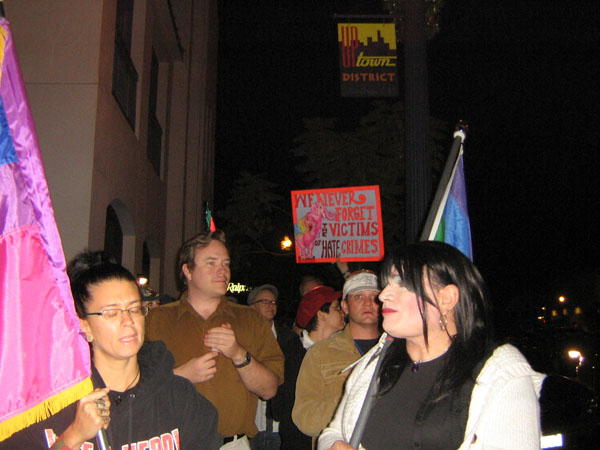
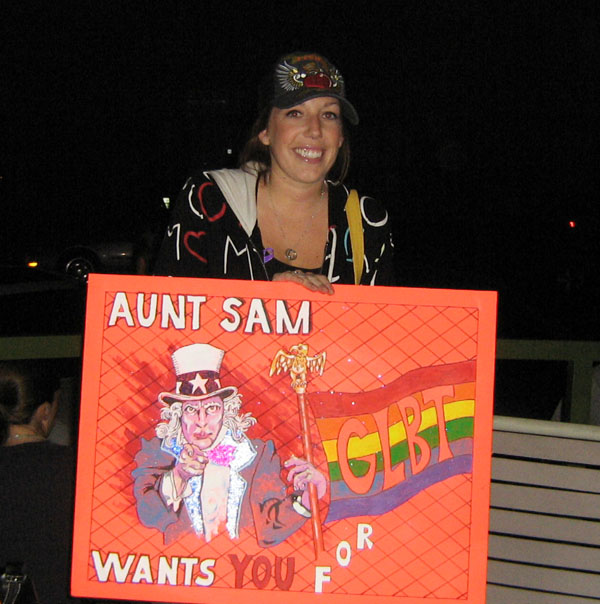
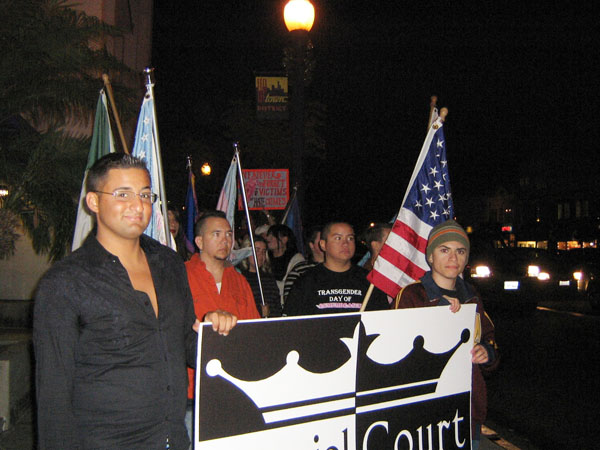

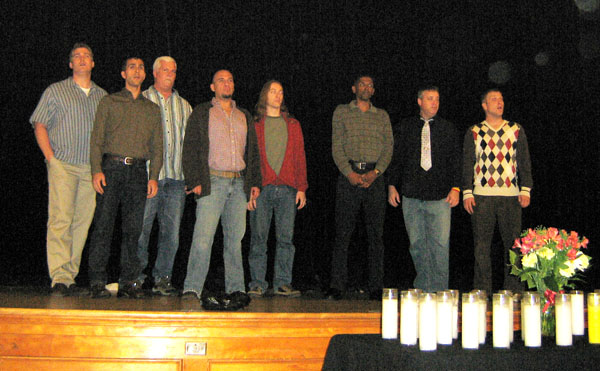
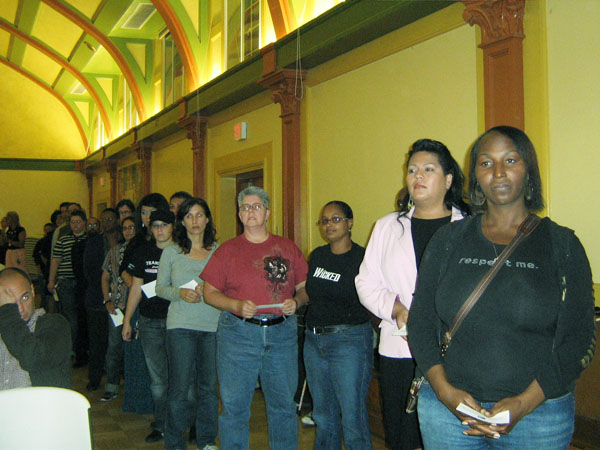
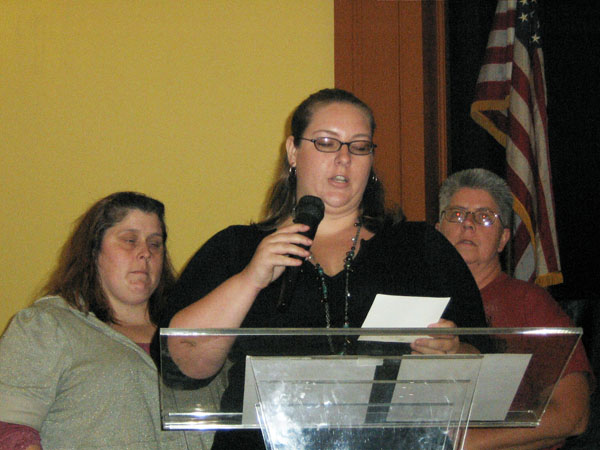
Add Your Comments
We are 100% volunteer and depend on your participation to sustain our efforts!
Get Involved
If you'd like to help with maintaining or developing the website, contact us.
Publish
Publish your stories and upcoming events on Indybay.
Topics
More
Search Indybay's Archives
Advanced Search
►
▼
IMC Network


